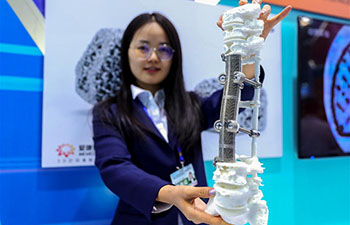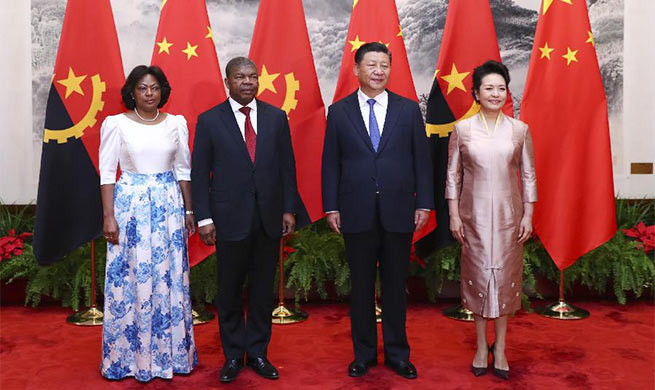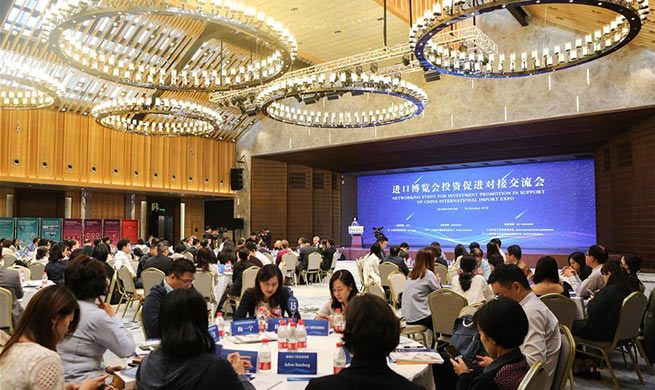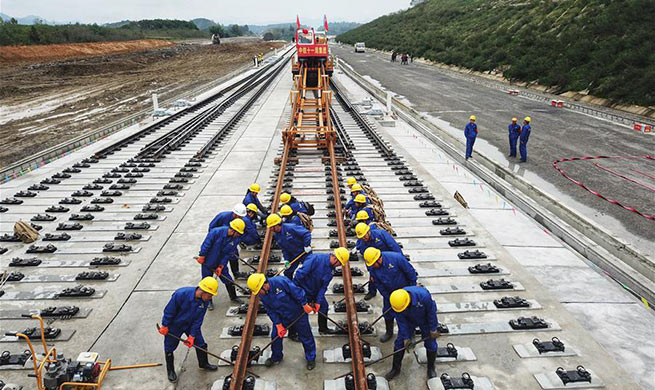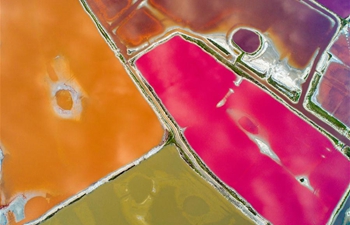SHENZHEN, Oct. 9 (Xinhua) -- Birthday wishes and marriage proposals are often displayed on the huge outdoor electronic billboard of KingKey Financial Center, Shenzhen's second-highest skyscraper. This landmark building, completed in 2011 with a height of 441.88 meters, offers a spectacular view of the sprawling metropolis.
Today, Shenzhen's skyline is dotted with over 100 skyscrapers (more than 200 meters high), 10 of which are over 300 meters high. The city ranks among the world's top three cities for most skyscrapers according to Chinese website gaoloumi.com.
In less than four decades, Shenzhen has transformed from a sleepy fishing town into a forest of skyscrapers.
"The city was a town of fishing ponds and desolate lands when I was sent to work here in 1982," recalled Wang Yugang in his 70s, a retired employee of a state-owned construction company who came to work in Shenzhen as the construction supervisor of the famed International Trade Center Building.
Two years after Shenzhen was announced as China's first Economic Zone in 1982, urban planners began to hatch the idea of building China's tallest skyscraper. That same year, the construction of the 160-meter-high International Trade Center Building began.
The pace of its construction impressed the country as it was completed in only three years. Since then, "Shenzhen speed" became one of the well-known outcomes of China's reform and opening up.
Over the past few decades, each new tower has redefined the city skyline. The fast-evolving skyline in Shenzhen serves as a timeline of the city's history.
In 1996, the 383.5-meter-high Diwang Building was completed, which was at the time the tallest building in Asia. In 2011, the 441.8-meter-high KingKey Financial Center was finished and in 2015, the Pingan International Finance Center with a height of nearly 600 meters dominated the city's skyline.
Shenzhen's tallest skyscraper expanded from 160 meters to 380 meters in 10 years, and it took only five years to smash the record from 440 meters to 600 meters.
"Compared with other first-tier cities like Beijing, Shanghai, and Guangzhou, Shenzhen has a big population with relatively little land," said Guo Wanda who works with the China Development Institute based in Shenzhen. "This is part of the reason why skyscrapers offer a solution to the problem."
As China's first testing ground for its market economy, Shenzhen has become a technology center and financial hub in recent years. With its favorable business environment, nearly 300 Fortune 500 companies have set up their China bases in Shenzhen.
"There will be more landmark skyscrapers in Shenzhen and the idea of a 'rising skyline for growth' will continue to be highlighted in the city's future economic development. Skyscrapers have become an inevitable part of Shenzhen," said Guo.








